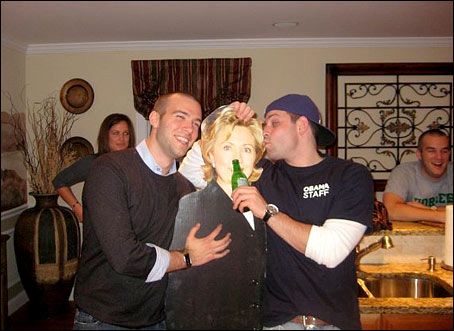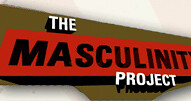 Sad times over here in the publishing world. The news reports come one after another: layoffs at Simon & Schuster, jobs cut at Random House, a freeze on acquisitions at Houghton Mifflin and layoffs as well, and plenty more to come, I’m sure, as the fiscal year comes to an end.
Sad times over here in the publishing world. The news reports come one after another: layoffs at Simon & Schuster, jobs cut at Random House, a freeze on acquisitions at Houghton Mifflin and layoffs as well, and plenty more to come, I’m sure, as the fiscal year comes to an end.
With the economy flailing, it’s no surprise that readers aren’t buying as many books. But is that really what’s causing all this distress?
Depression or no, it seems to me that publishing has been going in this direction for a long time. With the money that the big publishers have been spending on books in the post-Internet Age, in which content is otherwise cheap and plentiful, it seemed that it was just a matter of time before the old budgets couldn’t sustain themselves.
To make my point, here’s a generic case study from pre-economy-crash days: Let’s say Big House Publisher A offers a book deal to Author B for six-some-odd-figures. And then, to show its support for the book, Publisher A spends another 20,000 on publicity, marketing, and the like, making the overall expense on Author B’s book somewhere in the range of, let’s just say, $150,000. Throw in plant costs and overhead and manufacturing and shipping and that number gets even higher.
Now, Author B’s book is pretty commercial—not celebrity commercial, but an interesting topic that’s relevant to a good-size audience—and it gets some terrific reviews, and winds up selling, let’s say, 25,000 copies. Terrific! Well, come to think of it, the book is actually a little more nuanced and sophisticated and attracts a slightly more targeted niche audience and sells more like, say, 15,000 copies, but that’s 15,000 people who just read this book, and that’s fantastic too. An accomplishment any author can be proud of, no question.
Except. If you’re like me, this is where you stop and check your mental back-of-the-envelope P&L. Where, exactly, is the sustainable profit after spending six figures on a book that, like many wonderful books in your local bookstore, sells 15,000 copies? Or less? A scenario like the one above, for a book that costs $20, would mean losses for the publisher that would easily exceed $100,000.
The publishing industry, and the big houses in particular, have been headed for a housing-bubble-like crash for some time now, and we’re only starting to think about what a new mortgage might look like. A peek at a new writer-publisher model could be found, I’m betting, by looking at the independent presses, which tend toward savvier spending and more realistic expectations of what a book can do in the marketplace. The economy isn’t doing these indies any favors these days, either, but I’m betting these tight-and-lean operations are taking the hits with a little more stability.
If you’re a writer with publishing aspirations, I hope you don’t think I’m being a Cassandra. In fact, I’d say this isn’t necessarily bad news. I have to confess that I’m a little bit excited to see what’s next for literary America. If the rubric of yesterday was Big House = Big Advance = At the Mercy of the Big Three (Amazon, Barnes & Noble, Borders) Only to Almost Earn Out Your Advance but Not Quite, then maybe the new rubric will allow for More Houses offering More Realistic Advances which could lead to More Generous Profits which will create a More Open Marketplace that advances A Wider Range of Authors and Ideas.
A girl can hope.
It’s a long way from here to there. But sometimes we need to take something apart in order to put it back together again in a better and smarter way, and if you’re an aspiring author, I’m rooting you on to take advantage of the time we’re living in by pitching your book to editors and publishers who understand the new economy and the value of your intellectual offering: indie houses, small and medium publishers, and boutique agents who are committed to your message and mission, not (only) to your bottom line.
More on the bottom line — and what this means for YOUR bottom line — next month.
Meanwhile, a few nights ago I got a chance to hear literary great Gary Snyder read letters Allen Ginsberg wrote to him about getting high and getting naked and sitting zazen and circumambulating mountains, and it reminded me why I’m in this book publishing business: I’m in it to be in it, to be a part of the public exchange of ideas and the intellectual development of our era.
What about you?
—Laura Mazer
 For those of you in NYC, there’s a great film in town, playing tomorrow night. Join the Girls Education and Mentoring Services (GEMS) for a screening! Writes the NYTimes’ critic:
For those of you in NYC, there’s a great film in town, playing tomorrow night. Join the Girls Education and Mentoring Services (GEMS) for a screening! Writes the NYTimes’ critic:
 This morning I heard the most inspiring talk from one of the most inspiring women I know, Miss Jacki Zehner. The talk was sponsored by
This morning I heard the most inspiring talk from one of the most inspiring women I know, Miss Jacki Zehner. The talk was sponsored by  Linda Hirshman’s excellent oped in today’s NYTimes,
Linda Hirshman’s excellent oped in today’s NYTimes, The feminist blogosphere has been chewing over Gropegate these past few days (see the post with 364 comments over at
The feminist blogosphere has been chewing over Gropegate these past few days (see the post with 364 comments over at  I’m back from my
I’m back from my
 Some of you may have noticed that I’ve been a bit MIA lately from the site (and profuse apologies — I feel completely out of the loop because of it all), but I have a bunch PhD apps due and a conference that I’m running coming up in the next couple of weeks.
Some of you may have noticed that I’ve been a bit MIA lately from the site (and profuse apologies — I feel completely out of the loop because of it all), but I have a bunch PhD apps due and a conference that I’m running coming up in the next couple of weeks.  Sad times over here in the publishing world. The news reports come one after another: layoffs at
Sad times over here in the publishing world. The news reports come one after another: layoffs at 